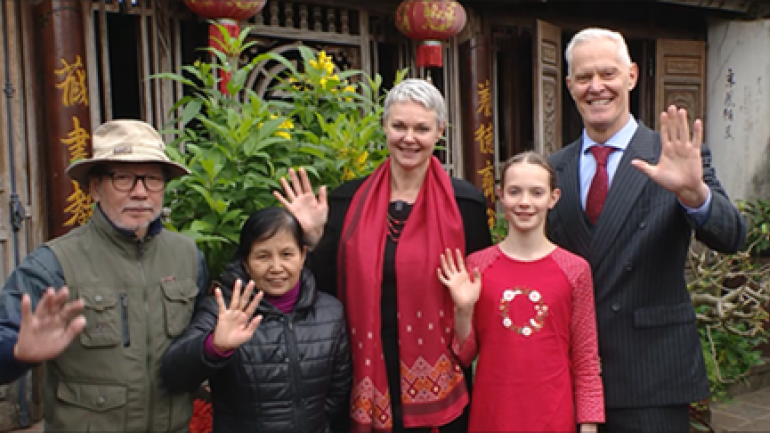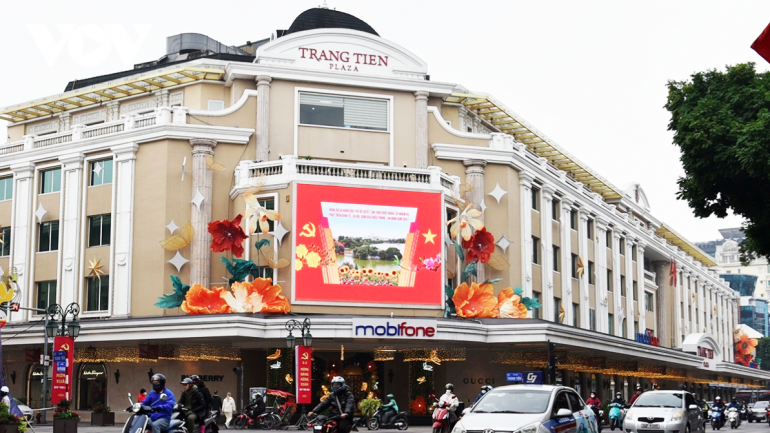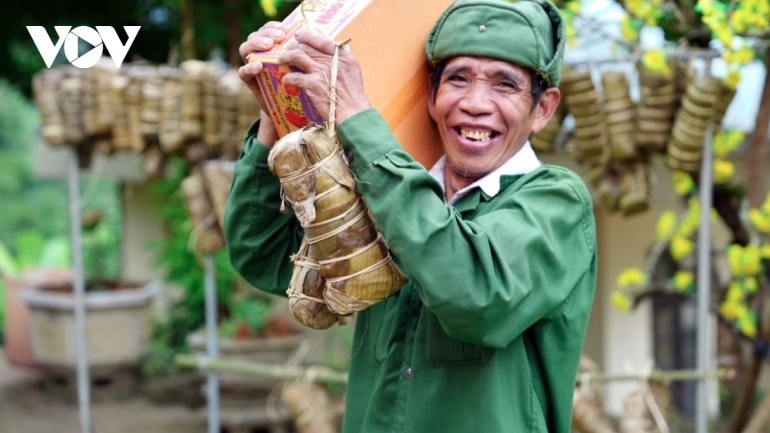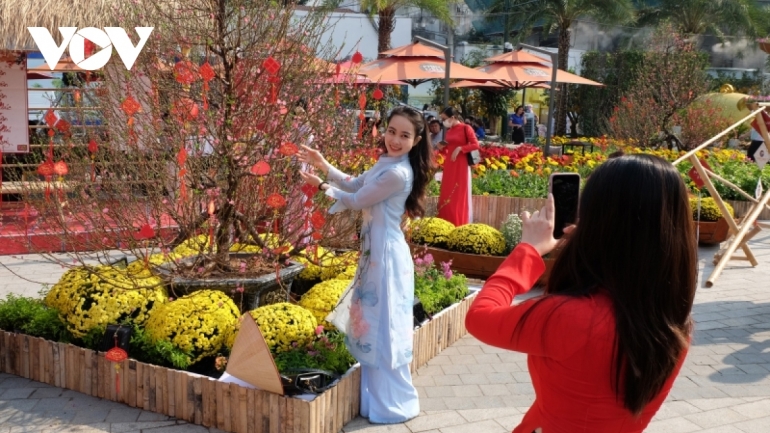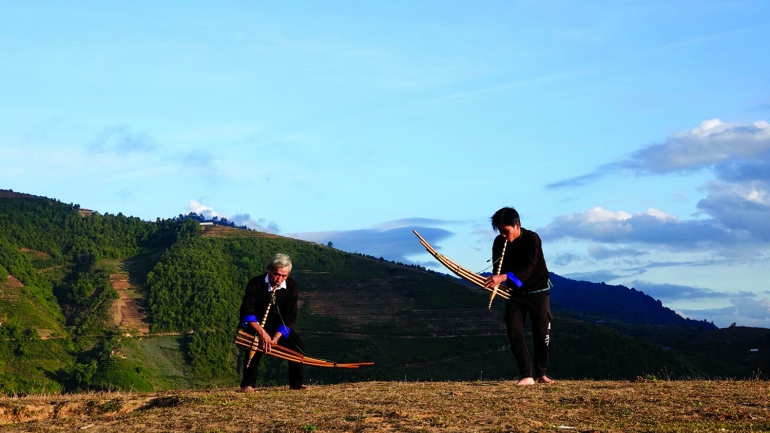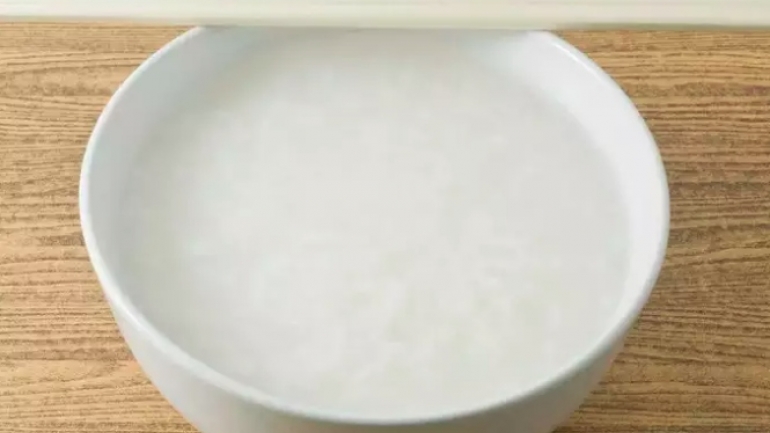Tet customs of Vietnamese ethnic groups
VOV.VN - Each ethnic group in Vietnam has typical customs to welcome the New Year, which is called Tet in Vietnamese. Their uniqueness helps make Vietnam’s cultural diversity.
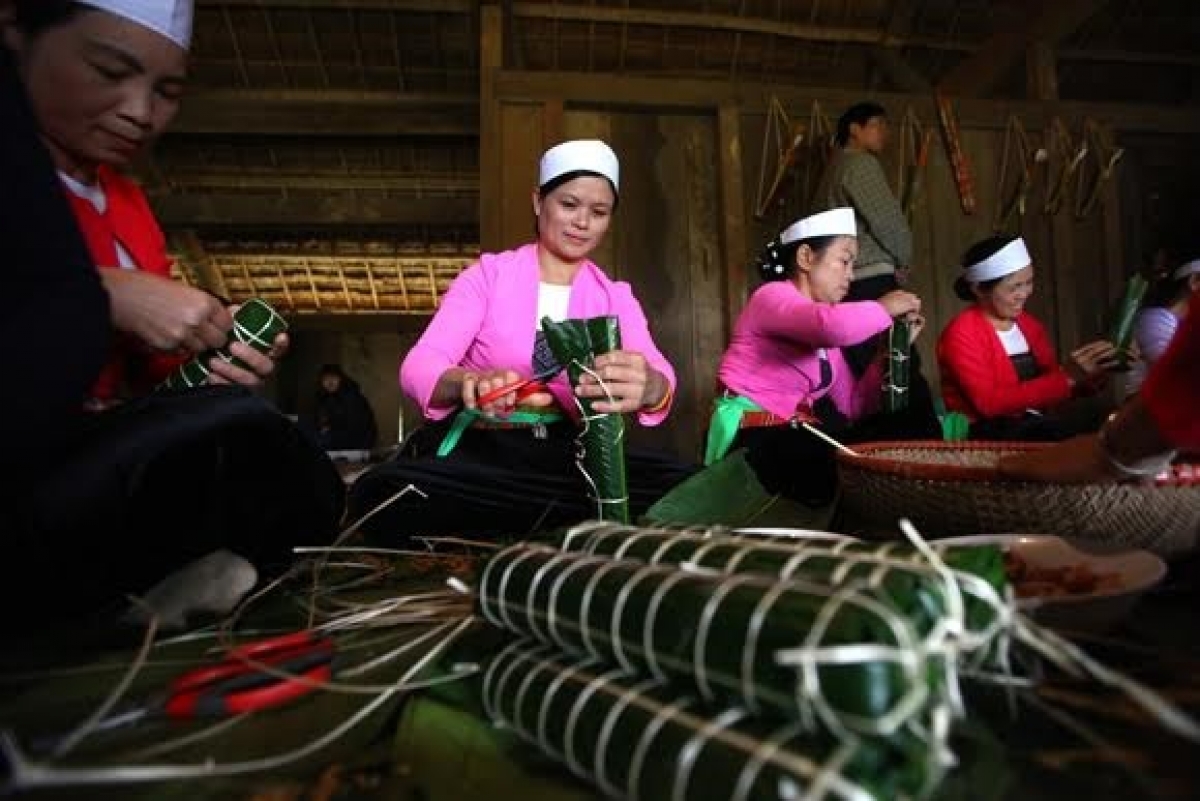
Each of Vietnam’s 54 ethnic groups celebrates Tet with typical activities over as many days as a Tet season. The Muong community in Ba Vi district, on the outskirts of Hanoi welcomes the New Year with joyful sound of gong.
All villagers sing and dance in praise of the local perennial banyan tree and share their aspiration for peace and prosperity. Then they fetch water from an old well to fill water tanks at home.
They believe that the holy water source will bring them good luck and success in the new year.
Tet begins on the 27th day of the 12th month. Everyone is busier than normal. They refurbish the kitchen and use the new area to prepare food for Tet. Dinh Van Luan, in Ba Vi, said that on the 27th, the man in the house arranges worship items on the ancestral altar.
“The altar must be solemnly decorated with a peach blossom branch, two sugarcanes, a tray of 5 fruits, and confectionaries. We believe that genies and the Jade Emperor protect human beings and uphold our ancestor’s worship rituals.”
Before Tet the San Diu in Dong Hung commune, Bac Giang province, distill rice wine to invite guests during spring festival.
On the first day of the New Year, San Diu people take water from spring to cook sweet soup to worship their ancestors. They don’t eat meat on the first day of the year but only sweet rice and green bean soup.
Pham Tho Doan, an official of Dong Hung commune, said, “With the government’s support we have established Soong Co Club to help restore and promote our group’s culture. Tet is the biggest celebration of the year and our traditional customs have been revitalized.”
The Mong in Can Chu Phin, Lung Cu, and Khau Vai communes in Ha Giang province celebrate Tet in the 12th lunar month. Tet is the time for relaxation, family reunions, and festive activities and for young people to make friends and find a partner.
Tho Chi Ria, a Mong man in Can Chu Phin commune, said, “In preparation for Tet, we have to collect enough wood for fuel for a month. We also store grass for cows enough for a week while we go to the festival. After the Tet month, we resume our work.”
On the last day of the lunar year the Mong glue silver votive money on farm tools to thank them for helping people grow rice, maize, and corn. All farm tools are placed below the altar to enjoy Tet like people.
On the New Year’s Eve, all family members stay awake. Old people recite epics and stories of their ancestors to teach their children of family traditions.




